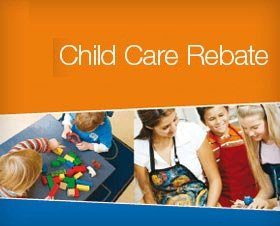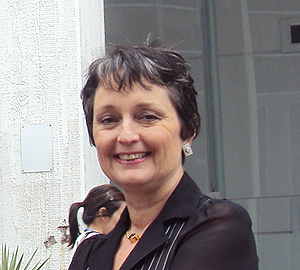
Nabil Wahhab -York Family Law
Financial planners and accountants need to know how their clients’ relationship status is seen in the eyes of the law, according to lawyer Nabil Wahhab, or things like super splitting after a break-up can get very complicated.
There is a saying amongst family lawyers: every applicant for financial settlement in the family law courts “walks away with a prize”.
Has this been true of de facto cases that have been decided in the Family Court since the States referred their de facto powers to the Commonwealth from 1 March 2009 (except South Australia which commenced on 1 July 2010)?
Has the court made orders for property or spouse maintenance in every de facto case?
Since the new law commenced, the Family Court (and the Federal Magistrates Court) has heard and determined a number of cases about jurisdiction namely whether the parties were in a de facto relationship or not.
The stakes are very high for both applicants and respondents – because if jurisdiction is established the gates open for the applicant for property settlement and spouse maintenance.
No wonder the fights over jurisdiction are hard fought and can take a number of days of hearing.
To invoke the family law de facto jurisdiction, an applicant must show that they were in a de facto relationship for a period of at least two years.
If the applicant cannot do this, their application for property settlement (including super splitting) or spouse maintenance is doomed as the court does not have jurisdiction.
There are exceptions to the two years rule which are outside the scope of this article: birth of a child to the relationship or significant contributions made by the applicant for which they have not been compensated (eg, if the applicant puts their savings towards the purchase of a home with the respondent), but it appears that there must still be a period of time where the applicant and the respondent must have lived together as a prerequisite.
The relationship status
What is a de facto relationship and how does a couple know if they were in a de facto relationship or whether their relationship was friendship or courtship?
This is a new concept in the Family Court because unlike marriage where there is a certificate of marriage, in de facto relationships there is certificate of de facto (one can be signed and registered at the Registry of Births, Deaths and Marriages; however most couples have not taken up the registration or signing of certificates of de facto).
Even if a certificate is signed, that is not determinative of whether or not there is or was a de facto relationship as that term is defined in the Act. This is definitely getting harder!
Relationships are complex. They take many forms. Parties who are in a relationship could live together for a period of time; they may have a sexual relationship; one of the parties may regard themselves as having an affair with the other; the other person may consider themselves as a “kept woman”.
Are any of these forms of relationships capable of a finding that a de facto relationship existed between the parties?
To answer the above question we have to go back to basics. Section 4(1) of the Family Law Act defines a de facto relationship as a relationship between two adult persons (a) who live together as a couple; and (b) who are not married to one another or related by family.
The essence of the definition involves two concepts: living together and acting as a couple.
Whilst it is true that in s.4(2) there are a number of circumstances that would be taken into account in determining whether two persons are in a de facto relationship, those factors or circumstances are “reminders of matters that possibly might be relevant in deciding whether two people are in a de facto relationship, but do not state its essence.
The essence is to be found in s.4(1).” This is important, as there may be cases where one can show that a sexual relationship existed between the parties, or that the duration of the relationship was significantly longer than two years – but a judge may come to the view that these pointers do not elevate the relationship to a de facto relationship.
Case study
The case of Jonah & White is illuminating to understand the concepts referred to above. In Jonah, the parties were in a relationship for 17 years.
They travelled together overseas on at least one occasion.
The respondent gave the applicant $24,000 early in the relationship which enabled the applicant to buy a home to live in.
They maintained a sexual relationship.
The applicant stayed at the respondent’s farm for a few days once every two to three weeks.
For 10 years, the respondent maintained the applicant financially by giving her between $2,000 to $3,000 per month, and the applicant did not work so as to be available for the respondent.
They each accorded to the relationship love and affection.
They gave each other “pet names”, did a joint portrait and sent each other affectionate emails and had very regular phone contact. Overall the parties had significant degree of mutual commitment to the other.
Ultimately, however, the judge found that all of these matters did not amount to a de facto relationship, for the applicant could not establish that the parties had a relationship as a couple living together on a genuine domestic basis.
Wow – all of the above circumstances and the judge still was not convinced?
The judge found that absent from the relationship was “the merger of two lives” – or the “coupledom”: the applicant must establish that the parties had so merged their lives that they were for all practical purposes living together as a couple, which he thought was the “manifestation of coupledom”.
The nature of the union lies at the heart of the statutory consideration.
In Jonah, the judge found that the parties’ relationship was clandestine; the parties maintained separate households; the respondent was married and had children yet he never introduced the children to the applicant; the respondent emphasised the limits of the relationship to the applicant – namely, if he had to choose between the applicant or his wife, he would choose his wife; virtually no involvement by the respondent in the applicant’s life in the locations where she lived; the parties were having an affair; the parties did not have a reputation as a couple and indeed the evidence showed very few public aspects to the relationship.
In the case of Taisha, Taisha was 22 when she moved in with Peng and her husband Pan and their children. Taisha asserted that she and Peng were in a de facto relationship for 17 years.
She asserted that they shared a bed; had sexual relationship over 17 years; went on holidays together (but not with Pan) and that she made financial contributions to the household.
The trouble for Taisha is that Peng and her children and Pan asserted something different. Peng said that she treated Taisha as her daughter and their relationship was a mother/daughter like relationship.
She agreed that they shared a bed together for many years but there was nothing sexual about the sharing of the bed.
Peng and Pan’s children’s evidence was along the same lines as their mother.
Ultimately, the judge did not find a de facto relationship, because even if they were a couple, Taisha could not prove that they were living in a domestic relationship.
How does one establish or rebut the ‘coupledom’ principle?
The following evidence could assist in establishing or rebutting the coupledom principle:
- Evidence from friends and neighbours that the applicant did not move-in;
- Toll records: In a recent case the writer had, the applicant alleged she lived with the respondent for two years and five days and she was at his home at all times except when she worked. The toll records established that she did not cross the Harbour Bridge to go to her work except on limited occasions;
- Facebook: In particular the “status” that people ascribe to themselves can be of assistance. Do they describe themselves in a relationship with the respondent; do they have photos of the respondent on Facebook;
- Bank statements/credit card statements: To establish locations where transactions were conducted and thus whether there was any moving in or merger of two lives. In a recent case the writer had, during cross-examination the applicant revealed that the way she was able to work out whether she was in the relationship with the writer’s client at various times (they had a number of separations during their alleged relationship) was by viewing her credit card statements. Having mapped out her expenditure on her credit cards over the period of the alleged relationship of 4.5 years proved very useful, as the writer was able to put to her periods that she omitted to include in her affidavit as being periods when she and the respondent were not together.
- Did one spouse move their belongings to the home of the other spouse? Or did they come with an overnight bag? The merger of two lives is powerfully illustrated where spouses move their belongings and items of furniture to the home of the other spouse. Situations where one spouse turns up, even as regularly as a couple of times a week, with an overnight bag and where they may leave some of their accessories behind, do not amount to coupledom. Their relationship appears not have matured to a merger of their lives together.
What should financial planners do?
If you are a financial planner or an accountant, what should you look for and what advice should you give your client over and above some of the matters raised above?
Consider the following:
- How do you refer to the client’s ‘partner’ in your records: is she/he referred to as girlfriend/boyfriend or spouse or partner? Clarify the issue with the client and advise the client to seek specialist family law advice;
- If the client is wanting to income split with their ‘partner’, consider the consequences as that may suggest some merger of lives and relationship;
- When setting up a Family Trust Deed, should the name of the client’s ‘partner’ appear as a beneficiary, or whether the class of beneficiary used should be the term ‘spouse’;
- Does the client’s ‘partner’ attend meetings with you, and if so what input does he/she make? How do you record their input into your notes or financial plan? Clarify the position with your client when you are told or find out that certain regular payments are being made from the client’s accounts to the ‘partner’ and advise the client to get family law advice on such a course;
- In a recent case a client signed a statutory declaration that he was in a de facto relationship for a number of years just to get stamp duty exemption on a car transfer. This evidence can be used effectively against that client if the client then asserts in court that they were not in a de facto relationship.
The financial consequences that will flow once de facto jurisdiction is established are significant, as the rivers of financial rights to the applicant will flow in the form of financial settlement and/or spouse maintenance.
If the judge in Jonah found jurisdiction, and even absent the court making an order for property settlement, the applicant would have been successful in obtaining periodic or lump sum spouse maintenance.
As at 2010 the respondent was giving the applicant $3,000 per month in support.
In an application for property settlement, even if an applicant cannot establish that they have made contributions to the property of the respondent, a court may still award a property settlement to that applicant as, in determining the property rights of parties, the court takes into account not only contributions made but also the future needs of parties.
If the respondent has, for example, $5 million in assets and the applicant none, then because of that disparity alone a court would award some property to the applicant.
That could be as little as 5 per cent and higher. In a $5 million property pool, 5 per cent is equal to $250,000! That is a lot of money in anyone’s language.
 THE man who lists Nelson Mandela and Bill Clinton as former clients is orchestrating publicity for the Sunshine Coast mother of the four Italian girls who have been caught in a bitter custody dispute.
THE man who lists Nelson Mandela and Bill Clinton as former clients is orchestrating publicity for the Sunshine Coast mother of the four Italian girls who have been caught in a bitter custody dispute. About 340,000 eligible parents can expect to receive their quarterly Child Care Rebate payment from this week.
About 340,000 eligible parents can expect to receive their quarterly Child Care Rebate payment from this week. OUTDATED laws are forcing doctors to twist the truth to get abortions for their patients, a study has found.
OUTDATED laws are forcing doctors to twist the truth to get abortions for their patients, a study has found. GETTING the kids ready to go back to school is a pretty stressful time for parents already before you start thinking about the costs involved. Add in the expense of buying new uniforms, books, stationary and sports equipment and it can be a big financial burden.
GETTING the kids ready to go back to school is a pretty stressful time for parents already before you start thinking about the costs involved. Add in the expense of buying new uniforms, books, stationary and sports equipment and it can be a big financial burden.

 A NSW Supreme Court
A NSW Supreme Court  PROSPECTIVE parents could receive discounted fertility treatment if they promise to donate some of their embryos to other people, under a proposal to deal with the problem of thousands of unwanted embryos sitting in clinic freezers.
PROSPECTIVE parents could receive discounted fertility treatment if they promise to donate some of their embryos to other people, under a proposal to deal with the problem of thousands of unwanted embryos sitting in clinic freezers. WEALTHY fly-in, fly-out workers are getting pre-nups to avoid losing their assets in relationship break-ups.
WEALTHY fly-in, fly-out workers are getting pre-nups to avoid losing their assets in relationship break-ups.